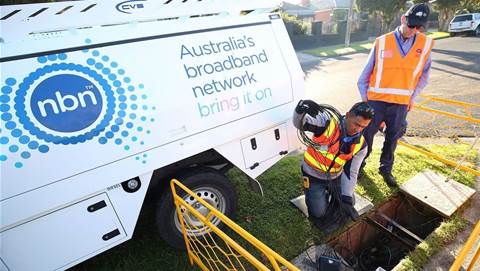When APRA changed its banking regulations in 2018, it paved the way for more neobanks to operate in Australia. Coincident with the development of open banking, there was a sense of entrepreneurial optimism.
The truth however is that neobanking proved a hard row to hoe.
In July this year, Volt Bank handed back its banking license to APRA due to issues with raising funds. The AFR reported that it spent $219 million in venture capital over the past five years to try and get its mortgage lending platform off the ground.
Volt was the first neobank to launch in Australia and its closure, dimmed hopes in the industry as the platform provided innovative solutions to those looking for a home loan.
Another neobank Xinja, handed back its banking license at the end of 2020 also due to funding woes. Two other neobanks, uBank and 86400 merged in 2021 after NAB acquired the latter bank.
Dom Pym, co-founder at Up explained why some of the neobanks like Volt and Xinja failed.
“The way I would characterise is that the bar is higher in Australia, it's no good launching a Monzo or Revolut. In Australia, you've got to do something more, you've got to do something different,” he explained.
“You’ve got to find a niche where you can compete and do better than the big banks because those incumbent banks are actually pretty good.”
Australia’s banking market is different to those in the US and the UK as those countries had incumbents that were lacklustre and lacking in creativity and innovation, according to Pym.
“They had nonexistent mobile apps, they didn't have real-time payments. The Australian banking sector is resilient against the GFC or other global catastrophes in terms of financial markets. But the technology of the digital component of the Australian banking sector is also world leading,” he added.
Isaac Pan, lecturer at the University of Sydney highlights some of the challenges that neobanks are currently facing.
“In Australia, we have these well-established big four banks and some large regional banks and market is very competitive before the introduction of neobanks. So, that leads to the operational side, neobanks and consumer neobanks will face a much tougher environment.
"This tougher environment will lead to a higher cost. For example, for the neobanks, if they want to attract more deposits, they have to have pay much higher deposit rates, compared to the big four banks, and that will really need to weigh their profitability, interest rate margin,” he said.
Daniel Gozman, director of engaged research at The University of Sydney Business School said there will be more consolidation in the future between neobanks and well-established banks.
“I would expect the big players to move in and see which platforms are working, see which ones have got good attractions and eventually acquire them,” he said.
Disruption ahead
The future of digital banking is not about banking, it’s about helping customers meet their needs and desires — easily and seamlessly, according to Angela Robinson, partner at Deloitte.
She explained in a blog post, “Incumbent banks face a disrupted landscape. Customer expectations are at an all-time high. The barriers to entry are dramatically reduced. New entrants are poised to disrupt and reshape the future of digital banking IF they can overcome the challenges of customer awareness, trust and cost of capital. And there’s an increasingly customer-focused regulatory environment.”
Some of the current operating consumer and business neobanks in Australia are Up, Alex, uBank, BNK, Monzo, Revolut, Hay, Judo and Tyro.
Jason Malo, director analyst at Gartner said neobanks in Australia will continue to introduce innovation, disrupt the market and will serve new customer value propositions on financial inclusion or social reform.
However, he does note the fact that these neobanks are at a “disadvantage” with their digital only approach.
He said they will need to adjust as they gain customers and expand in the market as well.
“Traditional banks must begin to create a servicing approach more complementary between both digital and physical channels. Neobanks may be forced to supplement with some kind of physical banking network, or consumers may perceive a competitive gap.
“A branch network, akin to a nonbank-specific ATM network, could arise to serve neobank clients and charge an interaction fee,” he explained.
Dom Pym said neobanks will be a catalyst to a massive disruption to the financial sector in Australia.
He said, “The financial sector is such a massive part of the Australian economy, that disruption is really positive. We thought we saw some disruption back in the Aussie Home Loans or the ING era, think again. They were just the tip of the iceberg, what is going to happen next is the real revolution.”
Big 4 vs neobanks
While the Australian market only has a few major players in terms of neobanks, they aren’t competing with each other but with the Big 4 banks of NAB, ANZ, Westpac and Commonwealth Bank.
Pym at Up said the neobank’s first goal and mission was to be number one in the under 35 segment which is the position CommBank currently holds.
“That’s CommBank today and all the Big 4 banks are there, they have about an 85 percent market share between them.
“For us to enter into the market, it's not much good competing for that 15 percent, it's much more likely that we'll be successful if we compete for the 85 percent. So our strategy lends itself to competing with the incumbents and with the majors,” he said.
Pym said there is more coopetition between the neobanks rather than competition.
“For example, when Xinja launched or when Volt launched, we've been very supportive. We know the founders; we reached out to them or they reached out to us.
“I felt like it was more this movement of new restricted Australian deposit taking institutions. These new neobanks, were all in it together to try and compete,” he said.
Pym explained that he hasn’t seen a strong competitive element outside of Up.
“That's not to take anything away, 86 400 did a great job and got acquired by NAB. Xinja got a lot of press, and we're very early participants in the market. It's really sad the story of Volt, we knew the founders there very well, Steven and Luke.
“In fact, when they first started that initiative, they came out to our office and we had a whiteboard session on how to build a digital bank. But it wasn't like a strong competitive element amongst the neobanks because we were all starting out and winning market share from the incumbents from the big banks,” he added.
Isaac Pan at the University of Sydney said the fact that NAB acquired 86400 means that the neobanks must be doing something right.
“NAB would be unlikely to acquire them unless they yielded some values in these acquisitions, especially on the technology and innovation side,” he said.
However, the Big 4 banks might not be sweating as much as the neobanks think.
“Some of the Big 4 banks might be less concerned. Australia’s big banks invest very heavily into IT and they experience very high gross in the user spaces. In those banks’ cases, it's unlikely they feel very challenged by these neobanks, because they are doing pretty well,” he said.



_(20).jpg&h=140&w=231&c=1&s=0)

.png&h=140&w=231&c=1&s=0)



_(26).jpg&w=100&c=1&s=0)

 iTnews Executive Retreat - Security Leaders Edition
iTnews Executive Retreat - Security Leaders Edition












_(1).jpg&h=140&w=231&c=1&s=0)



